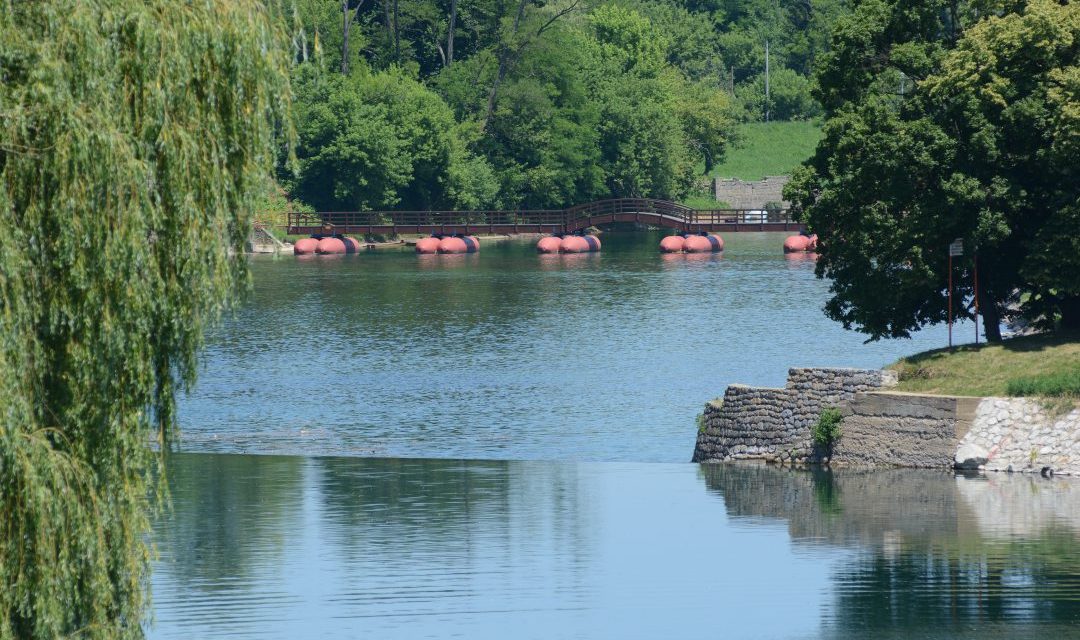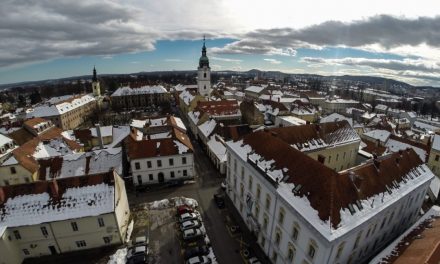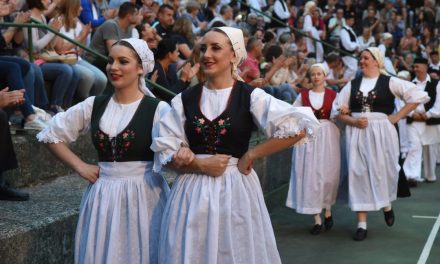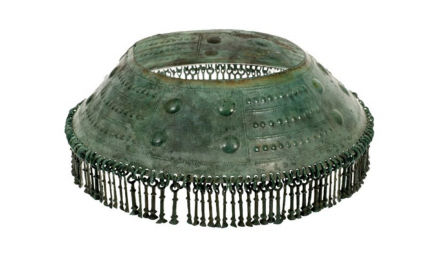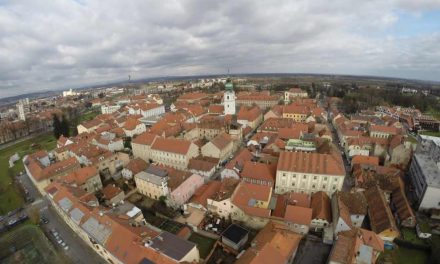Zagreb residents love the Korana River
Many tourists in the 19th century sought relief in the Korana River in Karlovac. Besides the locals, Zagreb residents were also frequent visitors. They adored the town’s healing baths. During the 1930’s, they would arrived into the town by train and horse carriage to Foginovo Beach. In 1960s and 1970s, thousands would arrive by car and enjoy the weekend on the Korana River. Since 2010, Foginovo Beach has been the first registered river beach in Croatia.
A stream containing a waterfall delta
The Slunjčica River is only 6.5 kilometres long, but is the pearl of the Croatian karst. Its running source is tranquil, and takes the form of a small lake, possesses almost vertical foreshores and has turquoise waters. In winter it never freezes up, with the lowest water temperature being 6.5 °C. It has a unique estuary, branching out and swooping into the Korana River through a series of 20 waterfalls, with colourful names such as Buk (Eng. small waterfall), Vilina kosa (Eng. morning glory family), Konjski rep (Eng. horse tail), and so on.
The beautiful turquoise Mrežnica
The Mrežnica River is the most beautiful of European rivers and flows through limestone karst. Travertine dams have converted it into a series of colourful turquoise lakes. The source of the Mrežnica River (260 m) is a cave spring near Slunj, flowing into the Korana River (112 m) in Karlovac. Along its 64-kilometre length of course it has 93 waterfalls, dozens of cascading waterfalls and a series of smaller waterfalls. The Šušnjar Waterfall is 15 metres high (as tall as a five-storey house).
The longest wooden bridge
Until 2011, the Mrežnica River in the settlement of Belavići was traversed by the longest wooden bridge in Croatia. Across the 208-metre long bridge, just above the mill and travertine waterfalls, cars, tractors, and even trucks can drive across it. The aged structure was closed to heavy traffic in 2008, and since then has only been crossed by cyclists and pedestrians – locals, tourists and guests of the nearby Slapić trailer camping grounds. A modern reinforced concrete bridge will be built on the same site.
Richness only 10 kilometres away
The Dretulja River springs from the edge of the Plaščansko Field below Mala Kapela. It submerges after only 10 kilometres and rises again as the Mrežnica River. It is remarkable for its exceptionally clean sources, a river tributary that meanders creating bends and only one tributary, the Vrnjika. The valley is abundant in moist meadows, mires (some of the last in Croatia), and accommodates a number of protected plants and animals.
The first Croatian hydroelectric power station
The first public hydroelectric power station was built in 1883 in Switzerland, and only a year later the same kind of power station was built on the Mrežnica in Duga Resa, which started operating the first hydroelectric power plants in Croatia for industry. Equipped with two 662 kW water turbines it provides DC power to the ‘spinning and weaving cotton’ factory. Later, power was increased, and since 1906, it provides AC power.
Munjara on the Kupa River
In 1892, Nikola Tesla advocated the construction of hydropower plants (HPP) on the Korana, Kupa or Krka Rivers. In 1895, Šibenik was the first city in Europe that received AC power. Taking over a concession previously held by Zagreb, Karlovac rolled out the Ozalj HPP Munjara on the River Kupac, becoming the second electrically powered city in Croatia, and also the city with the cheapest electricity in Europe. The architectural cloak of Munjara was designed by the famed Zagreb architect Hermann Bollé who also he designed arcades in Karlovac on the military cemetery and the parish church and rectory in Šišljavić.
The source of ‘Karlovačke kiselice’
There is an excellent source of mineral water in the Štrekovac Forest near Karlovac. The first record of it dated 1580 mentions that the Pauline Monks from the Kamensko monastery drank from it. In 1884, entrepreneur Stevo Borčić started bottling “Karlovac sorrel.” It was selling until 1909 throughout the Austro-Hungarian Empire. In 2007, the source was protected and is awaiting renewal of pumping station.
Mlakovac or Ilidža
The Mlakovac Spring is near Donje Budačko at Krnjak. It is named after hot (warm) water, when the temperature reaches 30°C. The spring was used during the Ottoman occupation, when it was called Ilidža (meaning spring in Turkish). Even in the second half of the 20th century, it was used for washing laundry and as a winter bath. Today, it has become a destination for hikers.
The healing spas along the Dobra River
The Lešće Spas have a unique location near the river Dobra. The spas were used in Roman times. In the Middle Ages, they belonged to the Frankopans. In 1820, Laval Nugent ordered the construction of a bathing building and accompanying 33 °C swimming pool. The healing waters were mentioned back in 1841. The 30 °C outdoor pool opened in 1947. The spas were renovated during the last decade, and today they are a favourite bathing area.
The freshwater ‘Ogulin Sea’
Lake Sabljaci, three kilometres from Ogulin, was named Ogulin Sea because of its beauty and size. It is a favourite resort for water sports lovers. It was created by remodelling the Zagorska Mrežnica in 1959 for the purposes of HPP Gojak (Lake Bukovnik is also located in the system). Behind the 14-meter high and 416 meters long dam is a blue oasis situated in the middle of a mountain landscape.
The beauty of the ‘Gorski eyes’
The southern hilly and mountainous part of Karlovac County is adorned by rivers and karst springs, and frequent beautiful ponds. Lake Sinac in Plaščansko Field consists of three ponds in sinkholes which are 40 meters deep. Alongside the Crkveni lug near Jasenak is a source – sink (estavela), which during high waters, flows out from the pond, and during low waters flows in it. Another pearl is the 60-meter deep Lake Schmidt (or Green) near Zagorje Ogulinsko.

